The mind lamp
“The Mind Lamp” is a LED luminaire that changes color between white,
red, orange, yellow, green, cyan, blue, violet and purple.
The American manufacturer Psyleron claims that a
person can cause the desired shade after some training, by willpower.
The most amazing thing is the principle of action, which is based on the probability of
quantum tunneling of electrons and simple statistical calculations,
that is, no magic, although the result is ambiguous for rigorous science.
But as a funny geek gift, it’s quite suitable :)
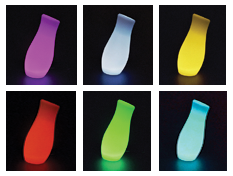
Actually, there are already serial board games with reading minds .
And laboratory experiments cannot be counted. Yes, but there is only one difference.
In all previous examples, some kind of technology for fixing brain
processes (biocurrents, blood flow in the cortex, etc.) is used: EEG sensors, magnetic
tomography, or other types of scanners. The readings of the instruments are interpreted by the computer,
and then a matter of technology. This is now called the "reading of thought."
But there is nothing like that in Mind Lamp. No sensors analyze brain waves,
no mental patterns “decode” any microcircuits. The lamp itself
is designed so that only “thought” can influence its work (according to the idea of the authors).
It all started with relatively simple experiments in the 80s, in which scientists tried to identify the
effect of the influence of thought on material objects. And it seems to be revealed, although
this statement may cause outrage and distrust on the part of the adherents of “strict science”.
In principle, this also makes me smile only :)
To test this, scientists at Princeton built a specific pinball. More specifically,
this device was called "Random Mechanical Cascade" (Random Mechanical Cascade).
Nine thousand plastic balls spilled from above onto a matrix of 330 rods,
which made the balls bounce right and left. Below this set
were placed 19 baskets into which all the balls fell.
Since after the ball falls exactly on the rod, the probability of its bounce to the right and
left is 50%, after passing several rows each ball fell into one
or another basket in a completely unpredictable way. But that is one. And for the thousands of
balls, in general, the laws of probability theory were already in force: the entire population was
distributed among the baskets according to the Gaussians.

But an observer was introduced into the experiment, who looks at the cascade and mentally wants the
balls to hit more to the right than to the left (or, on the contrary, more to the left than to the right). And what?
After 3393 experiments with 25 observers, Princeton scientists found that the
distribution curves of the balls do indeed shift, although not always very little. But shift
this one, as shown by rigorous calculations, was nevertheless more substantial than it might follow
from "pure chance."
In the following experiments, the “specialists” from Princeton used random
event generators based on quantum electron tunneling. This process is
probabilistic in nature and therefore serves as a basic source of “uncertainty”
in a special electronic circuit, that is, “first-class” white noise, translated by the
circuit into a set of completely random numbers.

According to science, the probability of tunneling constantly fluctuates around a value of 0.5,
but in practice, it turned out that the experimenter's mental desire to shift the curve
up or down corrected the chaotic tunneling processes in one direction or another,
and again by an amount that exceeded the possible “by pure chance” shift.
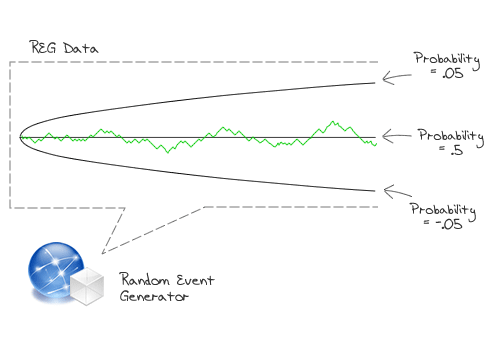
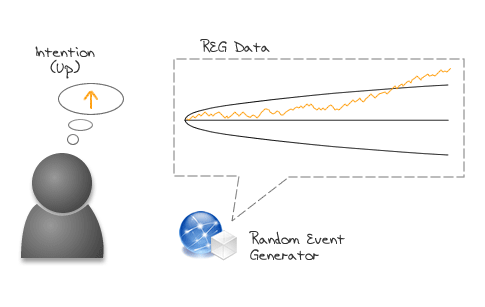
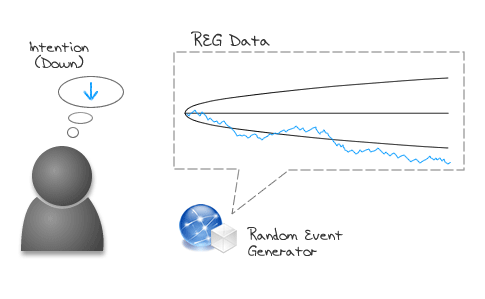

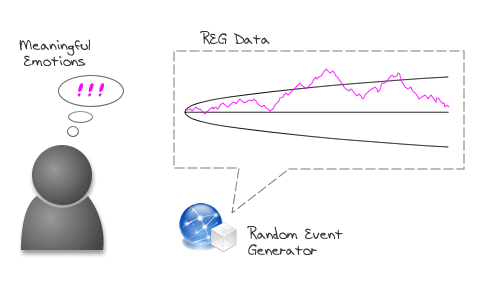
How the connection was made between the brain of the experimenter and quantum
tunneling of electrons - Princeton scientists have not figured out. Modestly
describing this phenomenon as an “unknown interaction”, the authors of the experiments
went further.
One can only dreamily argue that a certain transformation of information
in the form of signals in neurons influences, for example, entropy in a given region of
space, and this influence, in turn, slightly changes the probability of random
processes described by quantum laws.
At the moment, there is an opinion that the asymmetry of the results shows
properties of the microworld itself, and in the macrocosm this difference is simply smoothed out,
although this does not explain the results of the experiment with balls.
Based on these experiments, the “Mind Lamp” was invented.
Explanation of the principle of operation in the figures: The
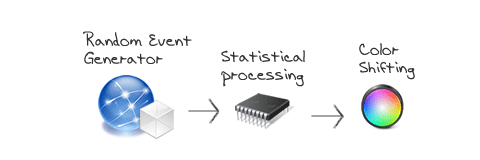
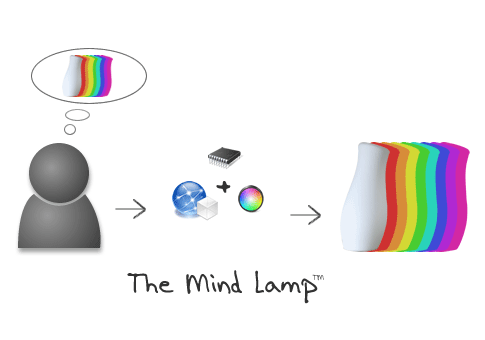
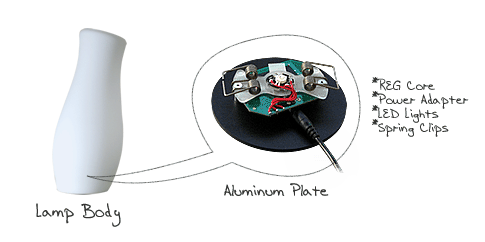
lamp can be bought here .
Attention! A stable result is not guaranteed. And the Chinese counterparts
have not yet seen.

red, orange, yellow, green, cyan, blue, violet and purple.
The American manufacturer Psyleron claims that a
person can cause the desired shade after some training, by willpower.
The most amazing thing is the principle of action, which is based on the probability of
quantum tunneling of electrons and simple statistical calculations,
that is, no magic, although the result is ambiguous for rigorous science.
But as a funny geek gift, it’s quite suitable :)

Actually, there are already serial board games with reading minds .
And laboratory experiments cannot be counted. Yes, but there is only one difference.
In all previous examples, some kind of technology for fixing brain
processes (biocurrents, blood flow in the cortex, etc.) is used: EEG sensors, magnetic
tomography, or other types of scanners. The readings of the instruments are interpreted by the computer,
and then a matter of technology. This is now called the "reading of thought."
But there is nothing like that in Mind Lamp. No sensors analyze brain waves,
no mental patterns “decode” any microcircuits. The lamp itself
is designed so that only “thought” can influence its work (according to the idea of the authors).
Lamp history
It all started with relatively simple experiments in the 80s, in which scientists tried to identify the
effect of the influence of thought on material objects. And it seems to be revealed, although
this statement may cause outrage and distrust on the part of the adherents of “strict science”.
In principle, this also makes me smile only :)
To test this, scientists at Princeton built a specific pinball. More specifically,
this device was called "Random Mechanical Cascade" (Random Mechanical Cascade).
Nine thousand plastic balls spilled from above onto a matrix of 330 rods,
which made the balls bounce right and left. Below this set
were placed 19 baskets into which all the balls fell.
Since after the ball falls exactly on the rod, the probability of its bounce to the right and
left is 50%, after passing several rows each ball fell into one
or another basket in a completely unpredictable way. But that is one. And for the thousands of
balls, in general, the laws of probability theory were already in force: the entire population was
distributed among the baskets according to the Gaussians.

But an observer was introduced into the experiment, who looks at the cascade and mentally wants the
balls to hit more to the right than to the left (or, on the contrary, more to the left than to the right). And what?
After 3393 experiments with 25 observers, Princeton scientists found that the
distribution curves of the balls do indeed shift, although not always very little. But shift
this one, as shown by rigorous calculations, was nevertheless more substantial than it might follow
from "pure chance."
In the following experiments, the “specialists” from Princeton used random
event generators based on quantum electron tunneling. This process is
probabilistic in nature and therefore serves as a basic source of “uncertainty”
in a special electronic circuit, that is, “first-class” white noise, translated by the
circuit into a set of completely random numbers.

According to science, the probability of tunneling constantly fluctuates around a value of 0.5,
but in practice, it turned out that the experimenter's mental desire to shift the curve
up or down corrected the chaotic tunneling processes in one direction or another,
and again by an amount that exceeded the possible “by pure chance” shift.





How the connection was made between the brain of the experimenter and quantum
tunneling of electrons - Princeton scientists have not figured out. Modestly
describing this phenomenon as an “unknown interaction”, the authors of the experiments
went further.
One can only dreamily argue that a certain transformation of information
in the form of signals in neurons influences, for example, entropy in a given region of
space, and this influence, in turn, slightly changes the probability of random
processes described by quantum laws.
At the moment, there is an opinion that the asymmetry of the results shows
properties of the microworld itself, and in the macrocosm this difference is simply smoothed out,
although this does not explain the results of the experiment with balls.
Lamp description
Based on these experiments, the “Mind Lamp” was invented.
Explanation of the principle of operation in the figures: The



lamp can be bought here .
Attention! A stable result is not guaranteed. And the Chinese counterparts
have not yet seen.

